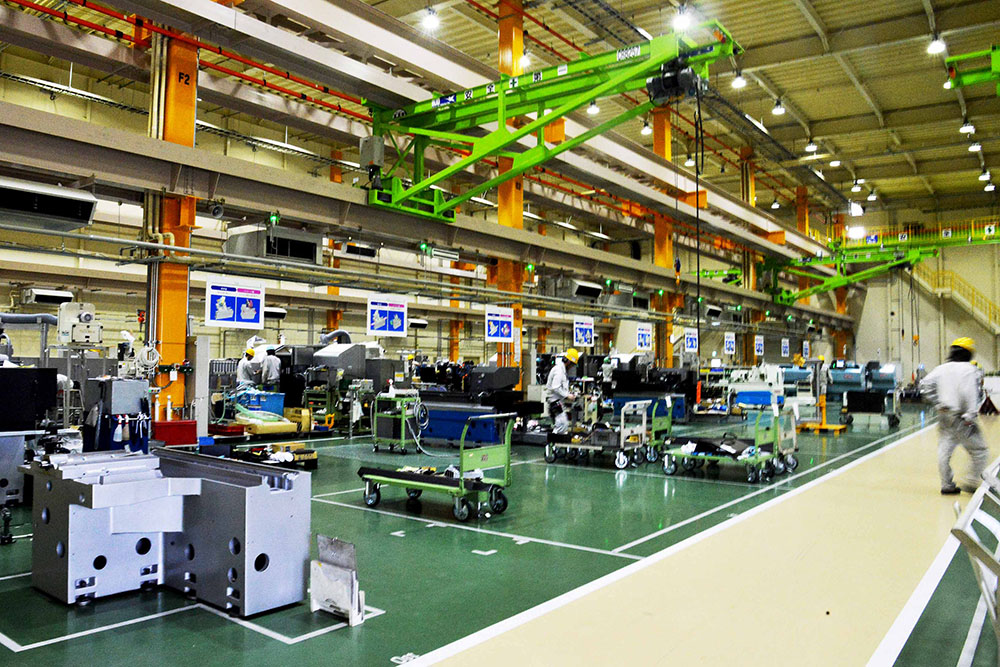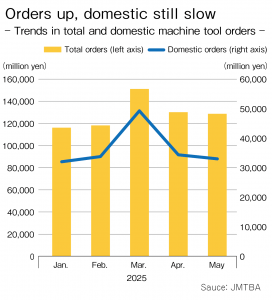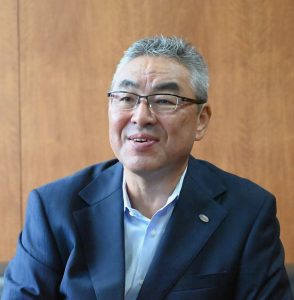
- News
- Basics
- Products
- JP Job shop
- Exhibition
- Interview
- Statistic
- PR
- Download
- Special contents
News
August 25, 2025

By: Takashi Haga
Deputy editor-in-chief, SEISANZAI Japan
Amid persistent global uncertainties, Japan’s domestic machine tool market remains in a phase of cautious stagnation. This article explores the current state of the Japanese market, incorporating the latest half-year statistics released by the Japan Machine Tool Builders’ Association (JMTBA) to better understand ongoing trends.
 According to JMTBA, domestic orders for machine tools fell approximately 20% year-on-year (YoY) in 2023 and declined a further 7% in 2024. In the first half of 2025 (January–June), total machine tool orders rose slightly—up 5.1% YoY to 777.5 billion yen, but domestic orders fell 0.9% YoY to 222.3 billion yen, marking the sixth consecutive half-year decline. The domestic total also fell short of 250 billion yen for the fourth consecutive half-year, suggesting that capital investment sentiment in Japan has not yet fully recovered.
According to JMTBA, domestic orders for machine tools fell approximately 20% year-on-year (YoY) in 2023 and declined a further 7% in 2024. In the first half of 2025 (January–June), total machine tool orders rose slightly—up 5.1% YoY to 777.5 billion yen, but domestic orders fell 0.9% YoY to 222.3 billion yen, marking the sixth consecutive half-year decline. The domestic total also fell short of 250 billion yen for the fourth consecutive half-year, suggesting that capital investment sentiment in Japan has not yet fully recovered.
JMTBA Chairman Shigetomo Sakamoto commented, “No matter who you ask, the response is always the same: ‘The future is uncertain.’” This outlook reflects a wide range of uncertainties, including geopolitical tensions in Ukraine and the Middle East, and policy instability—particularly regarding U.S. tariff measures under the Trump administration. The resulting political and economic uncertainty has dampened capital investment sentiment in the manufacturing sector.
Still, the overall total order value exceeded 750 billion yen for the first time in four periods, indicating some underlying resilience. This resilience likely reflects continued, if cautious, investment by large and mid-sized companies. In contrast, many small and micro enterprises remain in ‘wait-and-see’ mode, often waiting on subsidy approvals before making investment decisions.
The automotive sector, which has a strong influence on Japan’s overall manufacturing trends, continues to struggle. As Kenji Takada, Chairman of the Japan Machine Tool Distributors Association (JMTDA), noted, “Unless investment in the automotive industry recovers, the domestic market will remain in a difficult position.”
In the first half of 2025, automotive-related orders totaled 41.9 billion yen, down 14.6% YoY, according to JMTBA. The sector is also expected to be heavily affected by new U.S. tariff policies, making its future trajectory especially important to watch.
While some sectors—such as semiconductor back-end processing and energy—are performing well, the positive effects have not spread widely. Market conditions remain highly ‘uneven’ and fragmented—not only by industry but also by company size.
For example, while electric vehicles (EVs) show signs of slowing down, increased demand for hybrid and gasoline-powered vehicles has not translated into large-scale new investments. However, investment in efficiency-enhancing technologies is gaining traction. Similarly, companies seeking growth through automation are actively investing in equipment to strengthen their competitiveness in an increasingly globalized market.
In this complex environment, investment decisions are becoming more complex, and one-size-fits-all strategies are no longer effective.
Today’s market requires machine tool builders and distributors to take a more granular approach to sales and support. Rather than waiting for a broad recovery to materialize, companies must engage directly with customers to identify latent demand and tailor proposals based on industry, company size, and investment purpose.
A proactive, customized approach will be essential to revitalizing Japan’s domestic machine tool market and ensuring sustainable growth in the years to come.
 Kenji Takada, Chairman, Japan Machine Tool Distributors Association (JMTDA)
Kenji Takada, Chairman, Japan Machine Tool Distributors Association (JMTDA)
Japan’s domestic demand continues to stagnate, partly due to sluggish capital investment in battery electric vehicles (BEVs). Since around 50% of Japan’s manufacturing-related GDP is tied to the automotive sector, the lack of recovery in automotive investment is likely to prolong this sluggish environment.
That said, major Japanese automakers are expected to gradually increase total production volumes of hybrids, plug-in hybrids, and internal combustion engine (ICE) vehicles through 2035.
As for semiconductors, a recovery had been anticipated in the autumn of 2024, but the surge in investment seen in 2022–2023 now seems to have largely settled.
To break through the current impasse, companies must reevaluate their production systems. Investing in 5-axis and multi-tasking machines, automating production lines, and promoting digital transformation (DX) through IoT and AI will be crucial to improving productivity. The ideal is a smart factory capable of operating without human intervention.
While such smart factories are becoming more common overseas, Japanese manufacturers—especially small and medium-sized enterprises (SMEs)—are lagging behind. Awareness of the need for change remains low.
At JMTDA, we are prioritizing the so-called “vintage machine” issue. It is estimated that nearly 60% of machine tools in Japan have been in use for over 10 years, and about 50% for over 15 years. Simply replacing aging equipment can significantly boost productivity, enhance machining precision, and expand processing capabilities—ultimately leading to broader business opportunities. Without this positive cycle of equipment renewal and profit growth, domestic demand will not recover.
Trading companies also need to shift away from their traditional passive sales approach. They must clearly explain the challenges facing Japan’s manufacturing sector and communicate the benefits of upgrading equipment in concrete, numerical terms. Since this is difficult to do alone, we aim to work closely with machine tool builders to move forward together, step by step.